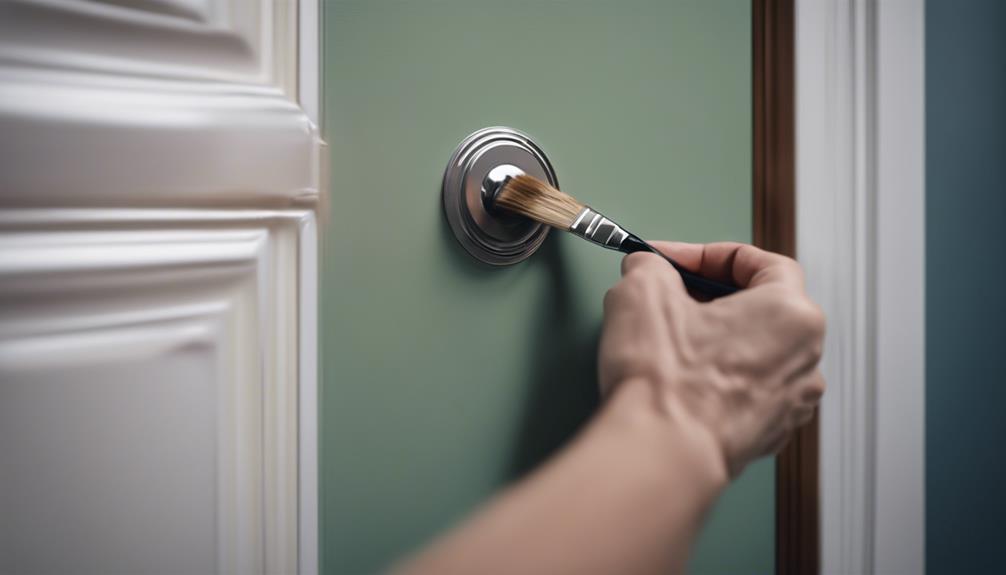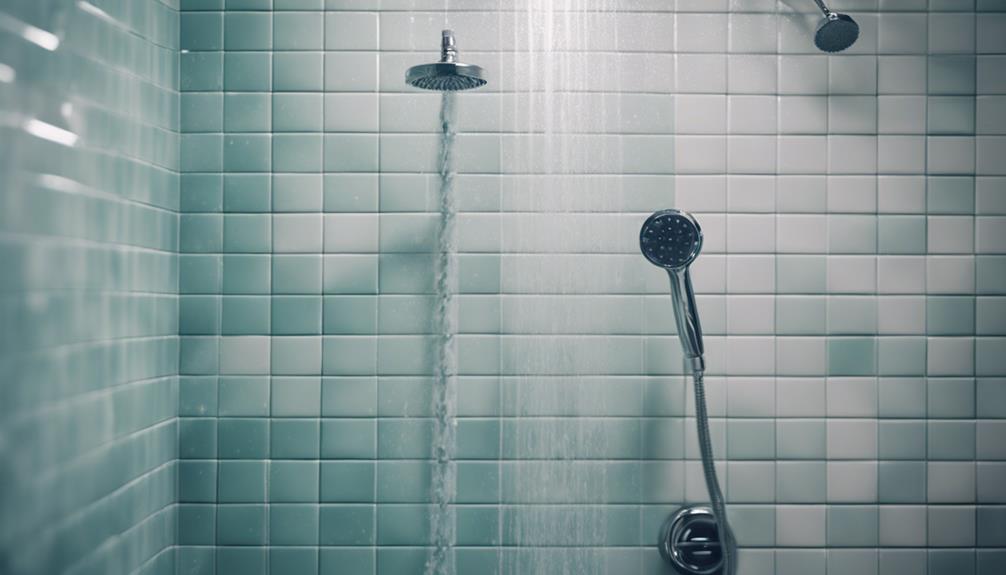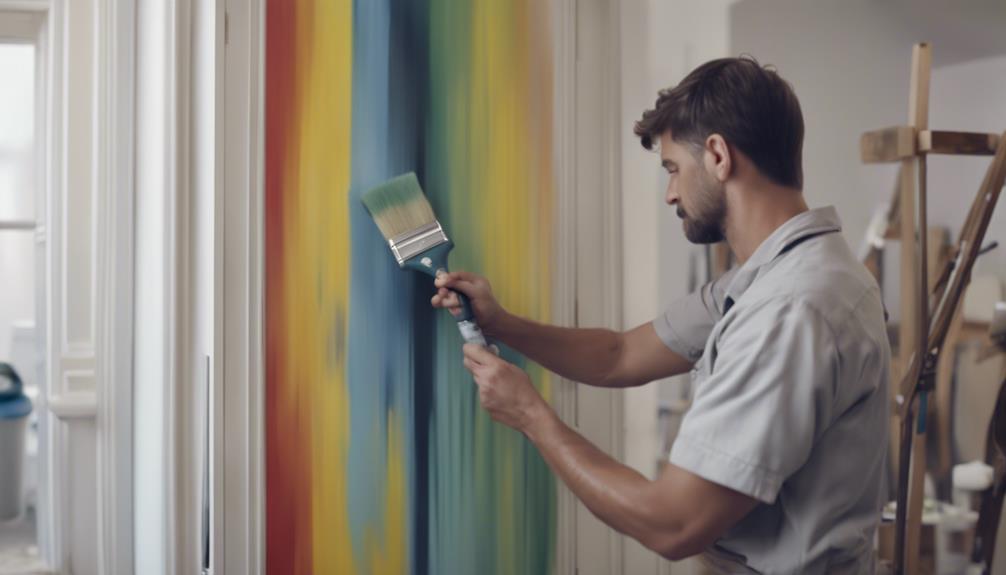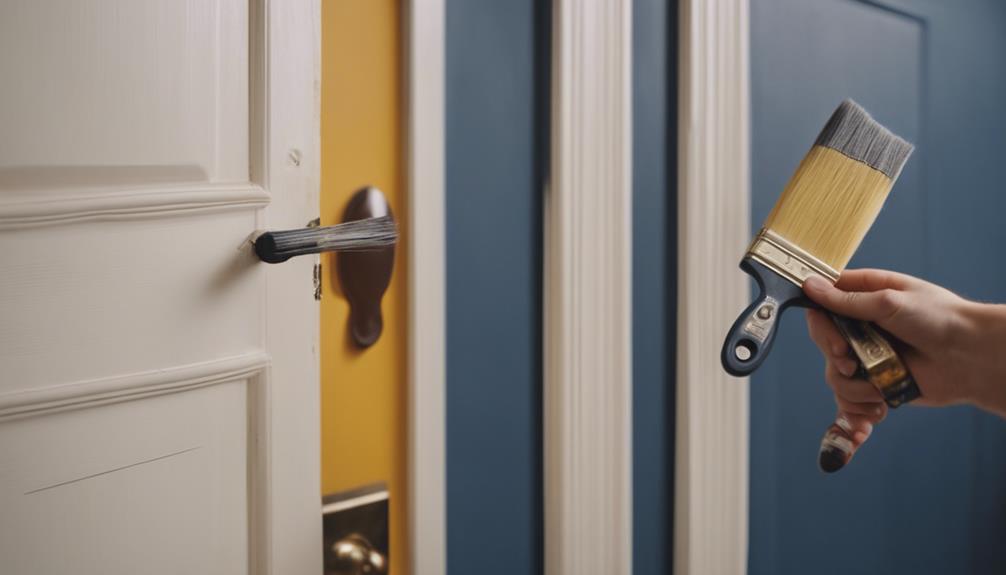When painting interior doors, opt for colors like Cloud White or Simply White in semi-gloss or satin for a classic look. Prep the surface by sanding with 120-grit paper, cleaning with degreaser, filling imperfections, and priming if needed. Choose a finish like satin for dirt resistance, semi-gloss for durability, or matte for a modern vibe. Essential the door for durability and proper adhesion. Use high-quality primer and follow instructions. After painting, rehang the door, test its movement and inspect hinges. Finalize by ensuring dryness, reinstalling hardware, and checking for touch-ups. Enhance your door's appearance with these tips.
Key Takeaways
- Consider Cloud White and Simply White for classic interior door colors.
- Use satin or semi-gloss finishes for durability and versatility.
- Properly prepare the door surface by sanding and cleaning.
- Prime the door for improved paint adhesion and longevity.
- Choose the right paint finish based on desired ambiance and maintenance level.
Best Paint Colors for Interior Doors
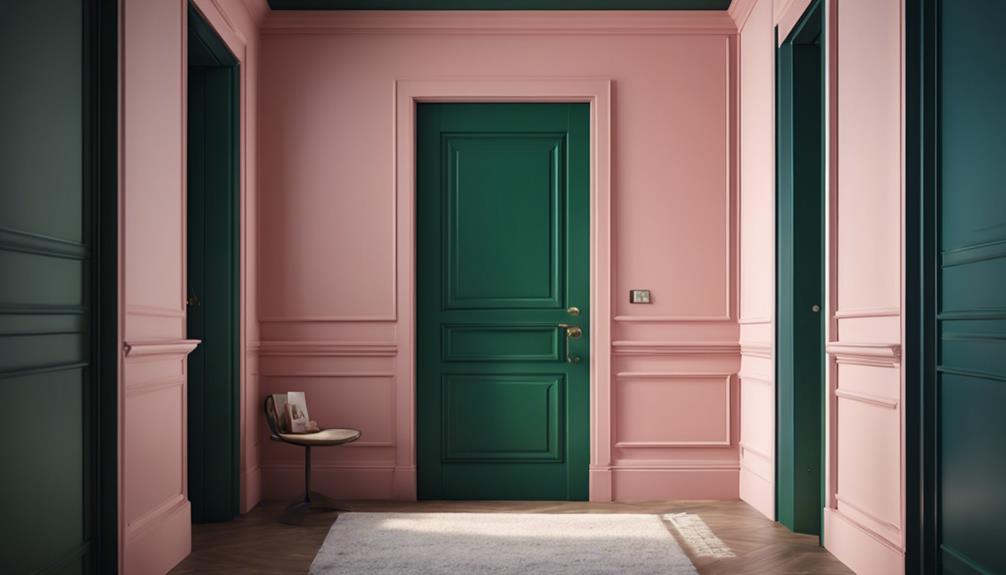
When choosing the best paint colors for your interior doors, consider popular options like Benjamin Moore's Cloud White and Simply White in semi-gloss or satin finishes. These shades are recommended for a cohesive look with your trimwork.
To get started, make sure to remove the knobs or cover them with painter's tape before painting. Use a brush to apply latex paint smoothly, paying special attention to the hinges. Benjamin Moore paints provide a durable finish that will keep your doors looking fresh for years to come.
Whether you opt for Cloud White or Simply White, both colors offer a classic and versatile choice for your interior doors. The semi-gloss or satin finish adds a touch of elegance while being easy to clean. Remember to paint in thin, even coats to avoid drips and achieve a professional result.
Preparing the Door Surface
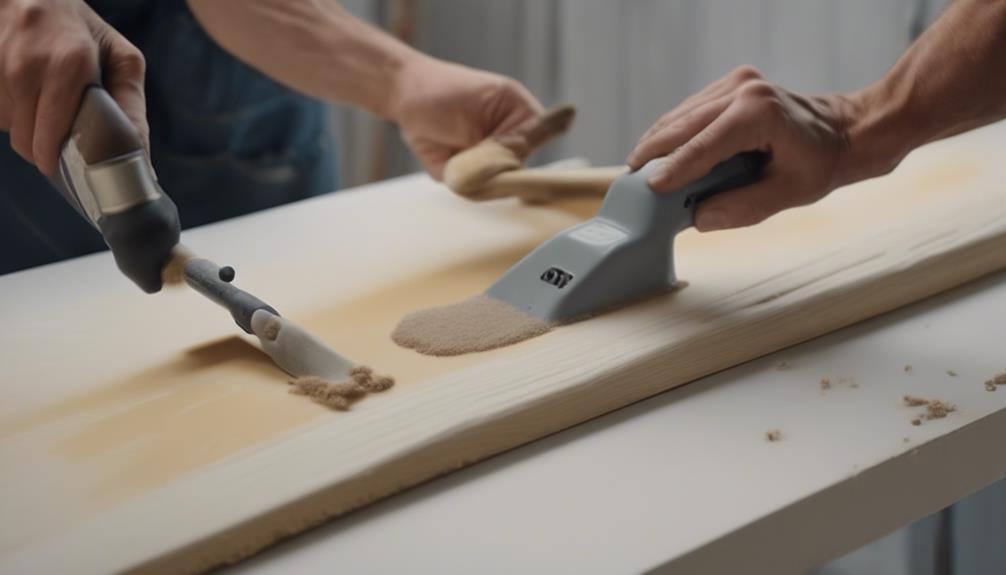
To create a smooth painting surface on your interior door, sand it with 120-grit sandpaper. This step helps the paint adhere better and results in a more professional finish.
Before sanding, use a degreasing cleaner to remove any dirt or grease that could impact the paint adhesion. Make sure to fill in any holes or imperfections with sandable filler, allowing the surface to be even.
If necessary, prime the door, especially if it hasn't been painted before or if there are stains to cover. Proper ventilation is essential during this process to establish a well-ventilated area for better paint adhesion and drying.
Choosing the Right Paint Finish
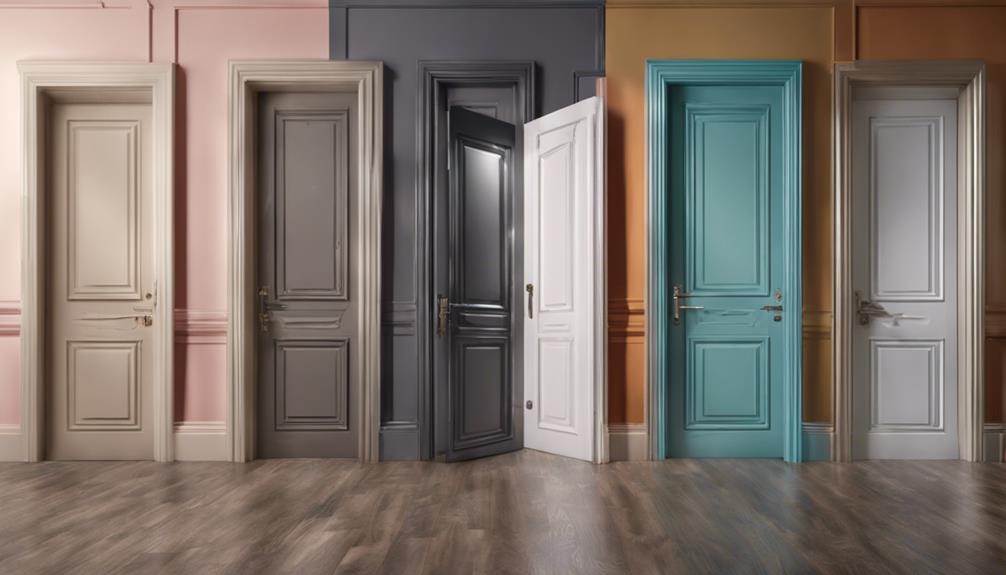
For the best results when painting your interior doors, consider the various paint finishes available to achieve the desired look and functionality.
Satin finish offers a subtle sheen that resists dirt and stains, making it a practical choice.
If you prefer a reflective surface that's easy to clean, the semi-gloss finish is a great option as it's durable and adds a touch of elegance.
For a high shine look that suits a contemporary aesthetic, the gloss finish is ideal.
On the other hand, if you aim to create a warm and inviting atmosphere, the eggshell finish with its soft glow is perfect.
Matte or flat finish provides a modern and stylish appearance, suitable for doors with less traffic.
When deciding on the interior door paint sheen, consider both the visual appeal and the functionality you desire for your space.
Priming the Interior Door
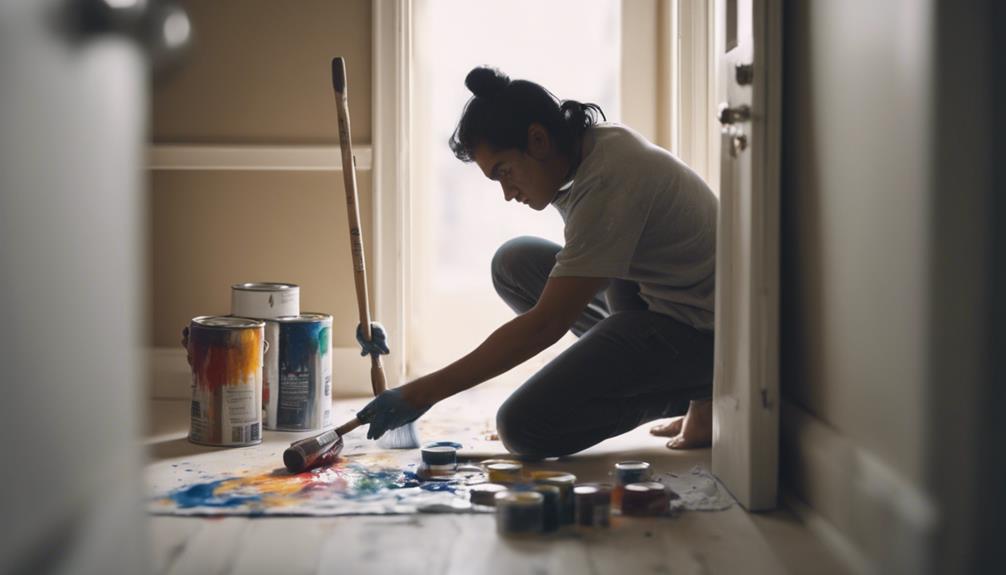
Considering the various paint finishes for your interior doors, now turn your attention to preparing the surface by priming it. Priming the door is essential for achieving a smooth surface that allows the paint to adhere properly. This step is particularly important for bare wood or metal doors to enhance the durability of the paint. Using a tinted primer can also help improve the final color and coverage of the paint. When applying the primer, make sure to do so in thin, even coats for the best results. Below is a table summarizing the key points to keep in mind when priming your interior doors:
| Keywords | Description | Importance |
|---|---|---|
| Primer | Essential for creating a smooth surface | Critical |
| Interior Doors | Improves paint adhesion and durability | Crucial |
| Bare Wood | Necessary for enhancing paint longevity | Important |
| Metal Doors | Helps prevent rust and corrosion | Essential |
| Even Coats | Ensures a uniform base for the paint application | Key for quality |
Painting Techniques for Smooth Finish
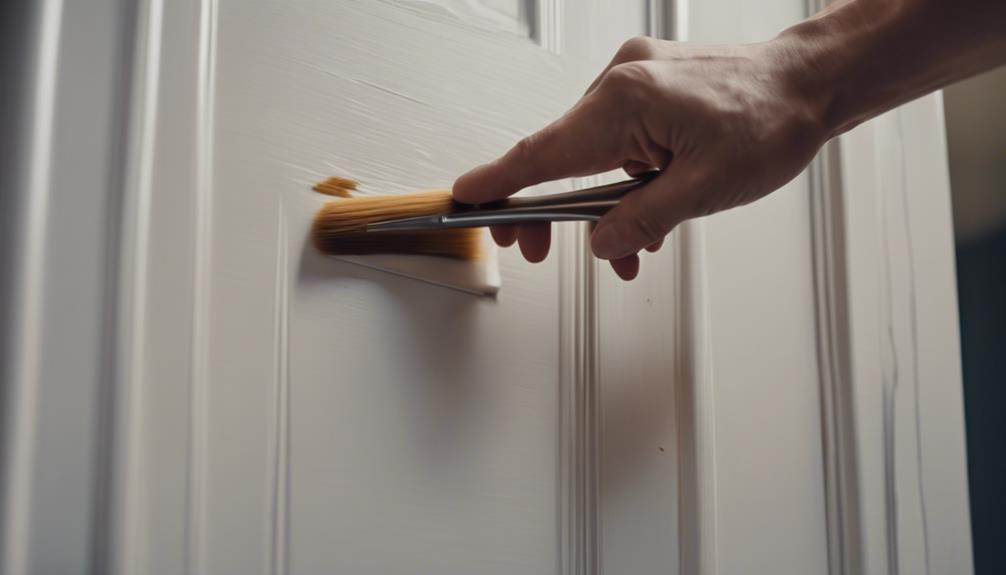
To achieve a smooth finish when painting interior doors, focus on sanding for smoothness and using proper priming techniques.
By ensuring the surface is well-prepared and primed correctly, you set the foundation for a flawless paint job.
These steps are essential in creating a professional look for your interior doors.
Sanding for Smoothness
Achieving a smooth finish when painting interior doors involves sanding with 320 grit sandpaper to smoothen out imperfections like brush strokes or drips in the paint. Lightly sand the door between coats for better adhesion, ensuring a professional result.
Proper sanding not only enhances the overall appearance but also improves the durability of the finish. This technique contributes to a polished look, ideal for interior doors. By using 320 grit sandpaper, you can achieve a smooth finish that eliminates imperfections, resulting in a professional outcome.
Proper Priming Techniques
For a smooth finish on your interior doors, guarantee better paint adhesion and durability by mastering proper priming techniques.
Using a high-quality primer suitable for the door material, such as wood, metal, or fiberglass, will seal the surface, prevent stains from bleeding through, and enhance paint durability. Properly primed doors require less paint for full coverage, saving time and money.
A well-primed surface allows the paint to bond effectively, creating a professional-looking result. Make sure to follow the manufacturer's instructions for the specific primer you choose to achieve the best results.
Tips for Painting Paneled Doors
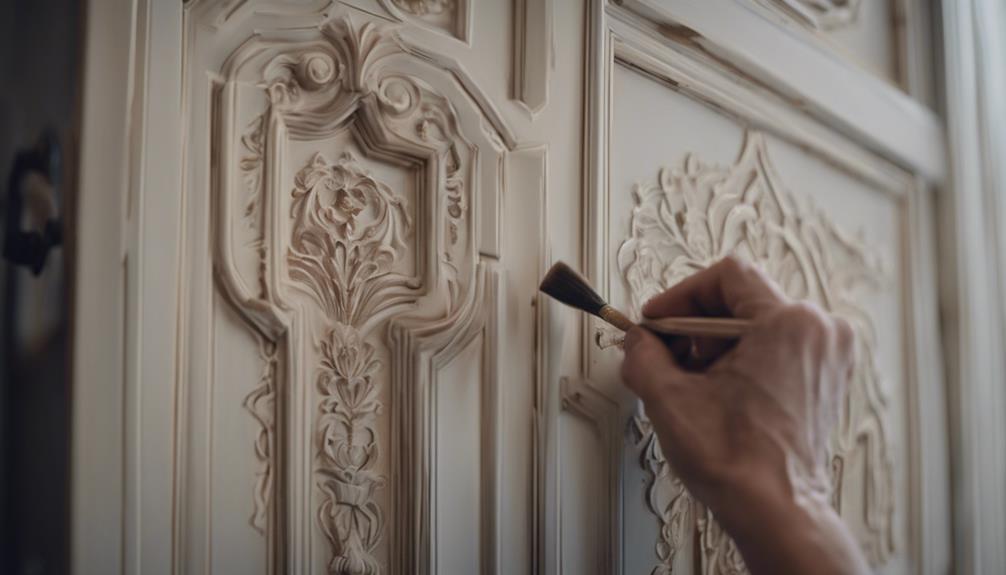
For a smoother and more professional finish when painting paneled doors, start by applying paint to the edges before moving on to the panels, vertical strips, and horizontal rails. Use a brush and roller in combination to achieve a smooth and even finish on your paneled door.
Feather the edges of the molding to guarantee a seamless look without visible paint lines. When painting paneled doors, follow a specific order – edges first, then panels, vertical strips, and horizontal rails – to secure proper coverage and a professional result.
Remember to pay attention to detail; take your time to achieve a flawless appearance. By following these tips and giving your paneled doors the attention they deserve, you can secure a high-quality finish that enhances the overall look of your interior.
Steps for Painting a Flat Door
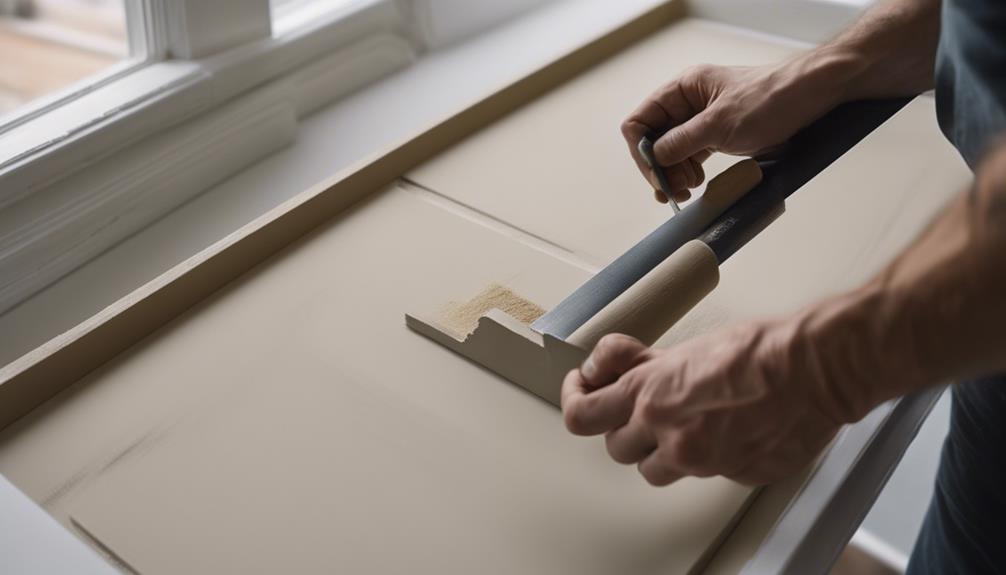
To paint a flat door effectively, make sure you start by removing the door knob and hardware for easy application. Begin by preparing the door's surface through light sanding and cleaning. Apply a coat of primer to help the paint adhere better.
When painting, use a foam roller for smooth and even coverage on the flat surfaces. Start from the top of the door and work downwards to prevent drips. After the first coat dries, apply a second coat to guarantee complete coverage. Be mindful of brush marks and try to paint in the direction of the wood grain.
Once the paint is dry, reinstall the door hardware. Use latex paint for easy clean-up and minimal fumes. Allow the door to dry completely before closing it to avoid any smudges or damage. Remember, proper prep work and attention to detail will result in a beautifully painted flat door.
Rehanging the Painted Door
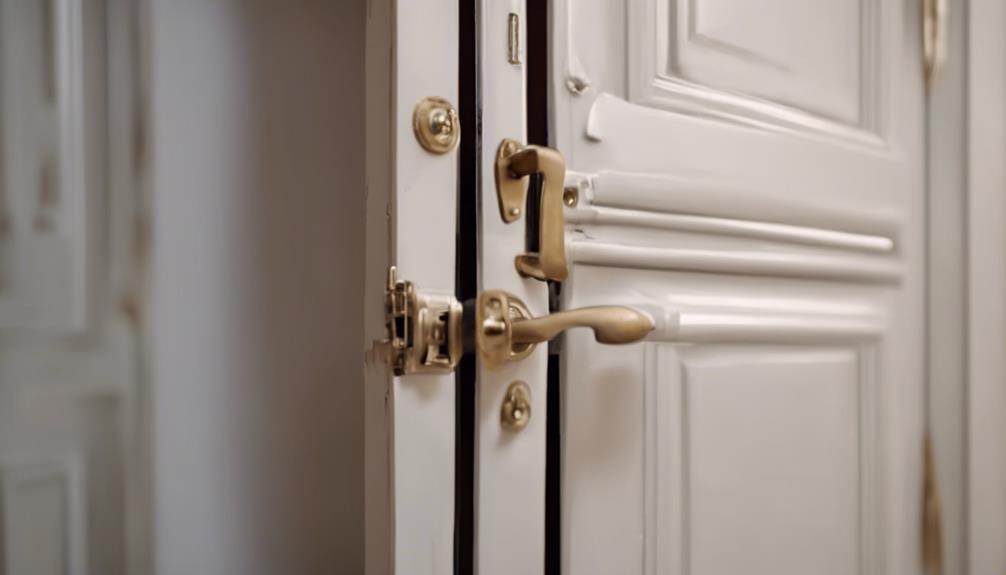
When rehanging your painted door, it's important to check that the paint has dried completely for at least 24 hours.
Make sure to use smooth cloth or towels on the sawhorses to avoid any sticking.
Remember to reinstall the hardware carefully and take precautions to prevent scratching the freshly painted surface while rehanging.
Adjusting Door Hinges
After painting the interior door, make sure proper alignment by adjusting the door hinges as needed using a screwdriver. Check for gaps and make adjustments to guarantee the door closes smoothly. Rehang the door and test its movement to confirm proper alignment.
Use the screwdriver to adjust the hinges vertically or horizontally until the door swings and closes correctly. Make certain there are even gaps around the door frame, indicating the door is properly aligned. By adjusting the hinges, you can fix any misalignment issues and make sure the door functions as intended.
Take your time to test the door multiple times to verify it opens and closes securely after rehanging.
Checking for Smooth Operation
Once the interior door has been painted, guarantee smooth operation by rehanging the door and testing its movement for proper alignment. Swing the door open and closed to check for smooth operation and make sure it moves freely.
Verify the alignment of the door by confirming it closes properly within the door frame. Inspect the hinges for any sticking or misalignment after rehanging the painted door. Adjust the hinges if needed to correct any issues with the door's movement or alignment.
Make certain the door opens and closes smoothly without any resistance or rubbing against the frame. By paying attention to these details and making necessary adjustments, you can verify that your painted interior door functions properly.
Final Touch-Ups Needed
To guarantee a seamless and professional finish, make sure the painted door is completely dry before rehanging it.
Cover sawhorses with a smooth cloth to prevent marks on the paint.
Reinstall all hardware after the paint has fully dried to maintain functionality and aesthetic appeal.
Check for any touch-ups needed once the door is rehung to make certain a flawless finish.
Take precautions to prevent sticking by confirming the door is fully dry and correctly positioned before closing it.
Frequently Asked Questions
What Paint Do You Use for Interior Doors?
When painting interior doors, consider quality brands like:
- Benjamin Moore's Advance or Aura lines
- Sherwin-Williams' ProClassic
- Dulux's Diamond Interior Acrylic
For smooth finishes, Farrow & Ball's Estate Eggshell offers rich colors, while Valspar's Cabinet Enamel is durable and easy to clean. Opt for Sherwin-Williams' Emerald Urethane Trim Enamel for long-lasting results. Select a paint that suits your style and durability needs for beautiful interior doors.
Which Paint Is Best for a Door?
When choosing the best paint for a door, consider Benjamin Moore's Advance or Aura lines for durability.
Sherwin-Williams' ProClassic and Emerald Urethane Trim Enamel are also great options.
Dulux's Diamond Interior Acrylic provides a smooth finish, while Farrow & Ball's Estate Eggshell offers rich colors.
Valspar's Cabinet Enamel Semi-Gloss Latex Interior Paint is durable and easy to clean.
Each of these paints has unique features suited for interior door painting.
What Is the Most Popular Paint Color for Interior Doors?
Cloud White and Simply White in semi-gloss or satin finishes are top choices for interior doors. These classic whites blend well with any design style, offering a clean and versatile look. Opting for the same color and finish for both trim and doors creates a seamless room appearance.
These timeless shades brighten up spaces and add a fresh aesthetic. Consider these popular options for a crisp and modern feel in your home.
How Many Coats of Paint Do Interior Doors Need?
When painting interior doors, it's essential to apply two coats for complete coverage and resilience. The initial coat serves as a base, while the second enhances color vibrancy and protection. Multiple coats help hide flaws and achieve a seamless finish.
Adequate drying time between applications is key for strong adhesion and lasting outcomes. For a professional look and robust finish, don't skimp on those two coats of paint.
Conclusion
Now that you have learned the best paint colors and techniques for interior doors, you can transform your space with ease.
By preparing the surface, choosing the right paint finish, and following the steps provided, you'll achieve a smooth and professional-looking finish.
Remember to take your time and have patience throughout the process.
With these tips, you'll have beautifully painted doors that will enhance the overall look of your home.
